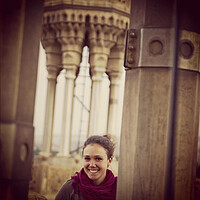What does Homs cease-fire mean for Syrian regime?
A daily roundup of terrorism and security issues
The Syrian regime and rebels have reached a 24-hour cease-fire in the Old City district of Homs to allow any remaining rebel fighters to leave before the city – once considered the "capital of the revolution" – falls entirely into regime hands.
Hundreds of civilians left Homs, Syria's third largest city, during a cease-fire in February, but about 1,000 rebel fighters stayed. Their departure would leave only one neighborhood under rebel control. According to Reuters, the remaining rebels are "outgunned and surrounded," with "little prospect" of holding out.
Claiming complete control of Homs would be a significant victory in an ongoing regime campaign to regain control of population centers around Damascus and throughout central Syria. The campaign complements President Bashar al-Assad's decision to hold presidential elections in June, which – barring any drastic change – he is certain to win. The regime is bit by bit reestablishing its control over much of the country, although the rebel-held north remains out of its reach.
Lebanese newspaper The Daily Star reports that the Old City of Homs and surrounding areas have been under siege for almost two years. Until the February civilian withdrawal, close to 3,000 people were under blockade. A United Nations and Red Crescent operation evacuated about half of this population, and several hundred have left since then.
The cease-fires are a critical part of United Nations efforts to expand the delivery of desperately needed civilian aid. Typically, the regime and rebels will strike a deal for a specified period of time, during which the UN and Red Crescent rush in with food and medical supplies.
A UN resolution passed in February to expand aid delivery has failed, UN humanitarian chief Valerie Amos said on Wednesday, according to Agence France-Presse. She told the UN Security Council that only 12 percent of Syrians in "hard to reach areas" – those under siege – had received aid.
"Far from getting better, the situation is getting worse," Ms. Amos said.
Aid convoys cannot lose time waiting for travel permits, she said, demanding ongoing security guarantees that would allow the convoys to cross conflict lines.
Syria Deeply reports on the dire state of food supplies in Homs, highlighting a Facebook page called "Siege Food" that details the kind of things being consumed in the besieged areas of the city:
Some of the posts are jokingly titled “Ten Caliber Steadfast Savory Breads," “Pressure Cooker: The Friend of the Siege," “Homsian Burger" and "Siege Sweets."
The founder of the Facebook page, who chooses to remain anonymous, told Syria Deeply that when the old city’s stocks of basic items like wheat and rice were nearly depleted last year, "we started thinking about how to transform anything and everything into food. We started with street weeds because as they say, need is the mother of invention.”
Residents began experimenting with what they had, creating their own unique “siege dishes.” The popular “Ten Caliber Siege Savory Breads" are apparently made from a dough not of wheat but "crushed seeds," mixed with oil.
The page publishes the recipes and preparation suggestions of the so-called siege dishes, most of which are made from herbs, nontoxic plants, birds, turtles or insects: ingredients that once-prosperous Syrians would have never imagined eating before the war. After describing how to catch and slaughter turtles, the Facebook page says, “boil the meat and add Indian apricots or figs, or simply make a soup."
The February UN resolution, 2139, also demanded the end to the indiscriminate use of weapons in populated areas, and has been violated by both sides, with the well-known barrel bombs from the regime and, more recently, car bombs from the rebels.
Car bombs in Hama Province today killed at least 18 people. One, in the town of Jidreen, killed 17 when a suicide bomber detonated a booby-trapped car. Fifty others were injured, The Los Angeles Times reports. Another car bomb in al-Hmairi killed one. No one has claimed responsibility yet for today's attacks, but Jabhat al-Nusra, an Al Qaeda-linked group fighting alongside the Syrian rebels, claimed responsibility for car bombs in Homs Province on Tuesday.
Unable to wield the sheer power of a formal military force, armed rebel groups have taken to tactics like car bombs that exact an outsized toll. On Wednesday, Human Rights Watch detailed how Jabhat al-Nusra and other armed rebel groups are using the threat of car bombs to try to extract concessions from the regime:
A mediator involved in negotiations between the government and armed groups based in the Old City of Homs told Human Rights Watch that certain armed groups there have openly threatened to target pro-government or Alawite areas in Homs to pressure the government to allow food into the Old City, which remains under siege. The negotiator said that in one exchange earlier in April, the fighters sought to negotiate safe passage of food into the Old City in exchange for information about where they had placed a car bomb in an Alawite area.
Human Rights Watch has repeatedly condemned the government’s siege tactics, including in the Old City of Homs. But under no circumstances do such tactics excuse or allow the deliberate targeting of civilians or civilian objects.
Jabhat al-Nusra has claimed responsibility for numerous lethal car bombings in areas without military objects in Syria that, taken together, amount to an ongoing and systematic policy of targeting civilians and may amount to crimes against humanity.









